In this article, we will talk about the internal components of the solar inverter for connection to the electrical grid. This type of inverter, known as grid tie, is used in distributed generation systems and centralized photovoltaic plants. In one application or another, the components are similar, only the dimensions and their form of organization change. A 1 MW inverter basically has the same components and the same control systems as its smaller 10 kW brother, for example. Is the inverter all the same? In a market where people are still not convinced of the importance of using connectors instead of splicing with insulating tape, it is difficult to explain the importance of choosing the inverter carefully. From the outside, all inverters are more or less similar. But it's feathers on the outside. Some have design futuristic, while others are more old-fashioned. Some bring display and keyboard for communicating with human beings, while others have already abolished this obsolete interface (like the inverter in the photo below), which can be replaced by a cell phone application. After all, what is important to analyze when choosing a solar inverter? Is there some kind of inner beauty in the inverter? Paraphrasing (and correcting) the late poet “May I forgive the ugly, but inner beauty is fundamental”.
Outside the inverter
There are dozens of brands of solar inverters currently available on the Brazilian market. I can remember a few: Fronius, SMA, Sungrow, Huawei, Omnik, SolarEdge, APS, Growatt, Solis, Refusol, Delta and... now I don't remember any more. Why are these brands remembered? Because they invest in a lot of marketing and are known or because they have some difference? So that this article is not labeled as biased, we will delve deeper technically instead of focusing on brands, brands or opinions. If it is possible to determine an initial filter for choosing inverters, in addition to the status of their brands, we can consider the following aspects: the manufacturer's existence, global market share, warranty period, presence of local technical assistance, tools and support channels, quality of after-sales service, price (important!) and… quality.
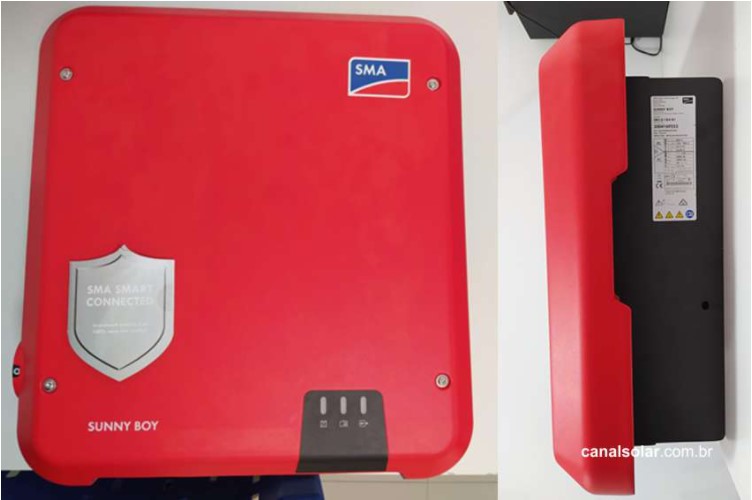
Quality is almost always the most complicated item to evaluate. All inverters sold in Brazil, up to the limit of 10 kW, must have INMETRO certification (National Institute of Metrology, Quality and Technology). Many believe that this certification is a certificate of quality, but it is not. Certification simply states that the equipment has passed a sequence of tests and meets certain requirements. Nothing can be said, with or without the INMETRO seal, about the quality of the inverter's internal components. Above 10 kW the situation gets worse: the INMETRO seal is not necessary. Manufacturers normally provide, as required by energy utilities, their international certificates. And we return to the same point: these certificates say nothing about the quality of what is inside the box. Anyone who buys an inverter doesn't know what's inside. Like most car buyers (like me), they don't evaluate the engine hidden under the hood. We want to speed away without worrying. But not quite.
Inside the inverter
The solar inverter is a complex electronic equipment, composed of a basic structure of power transistors, control board with microprocessor, input and output filters and auxiliary interface and communication systems. In addition to these components, which constitute the hardware of the inverter, there are still sophisticated control and protection systems embedded in the microprocessor programming. It's a lot of technology. If you want to understand a little about how inverters work, I recommend reading this article Functions and technical requirements of photovoltaic inverters. All this technology is so that you, the user, can live in peace and not worry about whether the inverter is operating correctly or not. The photovoltaic system must be transparent to the user. We don't need to remember that it exists all the time. All we want is for the energy produced by solar panels (in direct current) to be efficiently and safely injected into the electrical grid (in the form of alternating current). And at the end of the month we want to get rid of the energy bill. Do I need to open my inverter before purchasing? How will this article be useful to me? Look, no one needs to go around dismantling inverters. But one thing is true: these “famous” brands did not gain notoriety by chance. The big ones players of the market, which have the largest sales shares, invest heavily in quality and technological development. The big ones are not big by chance, at least “when it comes to” (borrowing the joke from a notorious colleague) inverters.

Next, let's look at some components of an SMA brand inverter. In my opinion, SMA equipment, alongside Fronius, Sungrow, Solis and Solar Edge (brands that I consider top-notch) are the “Ferraris” of the solar market. I can speak more accurately about SMA and Fronius, as they are equipment that I have already used, tested and dismantled to look inside.
Capacitors, the big villains
Let's start by evaluating the DC bus electrolytic capacitors. These components are present in all solar inverters and also in any other equipment that has a direct current input. The function of these capacitors is to maintain the inverter's input voltage constant and also to filter ripples in the currents. Although necessary, capacitors are a problem for inverters. Along with power transistors, perhaps even before them, capacitors are the components most prone to defects and failures. Typically, it is the capacitor that limits the useful life of the equipment. It goes without saying that good capacitors are necessary to produce an inverter with prolonged durability. Let's see two devices of the same size, side by side. From the outside, we already know that they are cute. Now let's look at its interiors. From a distance they look very similar, but inspection of the internal components reveals notable differences.
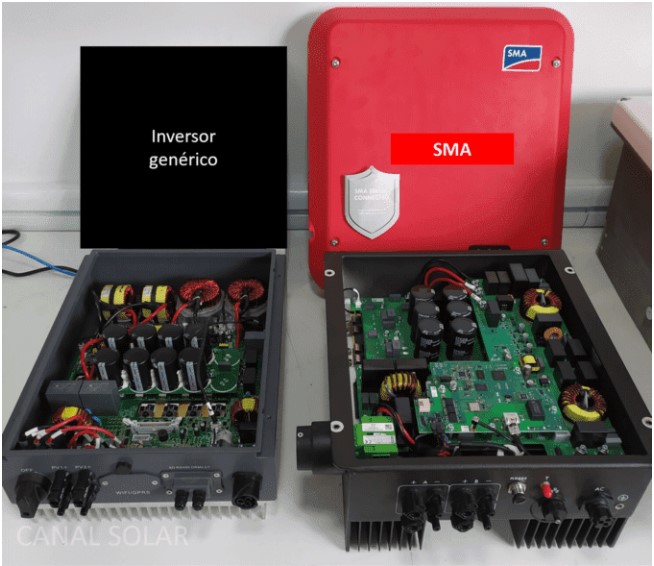
Looking closer, we see the difference in quality in the electrolytic capacitors of the two devices. The generic inverter uses capacitors from a generic manufacturer. My first hypothesis is that the capacitors are connected in parallel. Therefore, the nominal voltage of the capacitors (315V) is very close to the operational limit. This reduces the equipment's ability to withstand surges and overvoltages. My second hypothesis says that the capacitors can be connected in series, which reduces their capacitance by half, but doubles the working voltage. This configuration would not be recommended (I hope it is not the true hypothesis) for two reasons: the series connection causes the voltage imbalance between the components, in addition to greatly increasing the internal resistance ESR. ESR is the acronym for “Equivalent Series Resistance”. Translated, it is an electrical resistance that every electrolytic capacitor has. This resistance, in addition to making it difficult for the component to perform its function, causes the component to heat up, bringing it to the end of its life more quickly. Have you ever seen an old electronic board with those swollen capacitors? The main cause of this is ESR. In the SMA equipment, on the other hand, we find a set of electrolytic capacitors from the EPCOS brand. Without wanting to advertise, it must be recognized: the best equipment in the world (solar inverters or anything else) is generally equipped with capacitors from this brand. There's no need to say anything more, but let's continue. Let's see that the capacitors used in SMA have a nominal voltage of 550V, higher than the maximum operational voltage. In the data sheet the manufacturer specifies an operating voltage range and an absolute limit. This limit is precisely the maximum voltage that the capacitor can withstand at its terminals, according to its specifications. We then see that the capacitors of the SMA equipment work loosely in relation to the voltage. Furthermore, I can safely say that the capacitors are connected in parallel. With six capacitors, the total ESR is reduced to 1/6 of the individual ESR of each component.
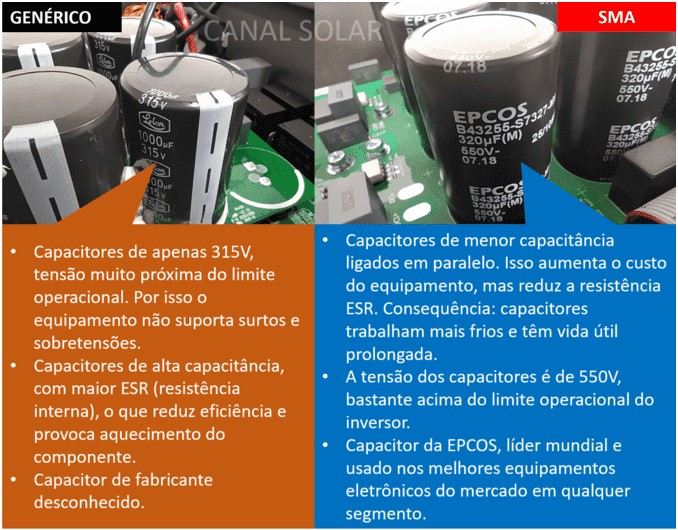
Power Transistors
Let's go deeper into our investigation. We disassemble the inverters to analyze their components more closely. An important component of the inverter is the power electronic transistor. Along with electrolytic capacitors, the transistor is one of the most critical components of the equipment. Power transistors function as on-off switches in a process called switching. The solar inverter is a switched electronic converter (like computer power supplies, for example). Typically, a transistor turns on and off about 30,000 times per second. Imagine this over several hours, days and years of operation. The transistor is subjected to very high stress and at some point it will fail, as its useful life is limited. The choice and sizing of transistors are fundamental to determining the durability of an electronic converter. Below we show some information about the transistors used in the two pieces of equipment we are analyzing.
Comparative analysis: capacitors and transistors
The 3000W SMA inverter uses capacitors for 550V and transistors for 150A (at temperature of 25OW). The generic 5000W inverter uses 315V capacitors and 120A transistors. The first manufacturer takes care to oversize its components, delivering reliable and durable equipment to the market. On the other hand, the generic inverter uses the components with little clearance. Which equipment do you think will fail first? The SMA inverter employs a higher capacity transistor, which costs $1.11 more expensive than the generic inverter transistor. This makes a big difference in the final cost of the equipment (as five transistors are used), leading to an overprice for the final product. It is true that this is not the price that the manufacturer will pay for the component. We are only doing a comparative cost analysis using the values of a retail distributor as a reference. The important message is: the SMA manufacturer chose to use a more robust and more expensive transistor in its 3000W equipment, while the generic manufacturer uses a cheaper and inferior transistor for a 5000W equipment. Did you realize what we're talking about? The SMA inverter used in this comparison has a nominal power of 3000W, while the generic one is 5000W. In other words, we are forcing this comparison in a very biased way. It's true: we are favoring the generic inverter. As they say, we are comparing bananas with oranges… and showing how oranges are superior. It's no secret in the electronics industry that transistors, in the best designs, must work with a good amount of clearance. This increases component life and reduces MTBF (Mean Time Between Failures), a well-known figure of merit in the industry. In free interpretation, MTBF is the time it takes for a given piece of equipment (on average) to fail. Finally, looking again at the capacitors, observe the optimal working voltage of each inverter in the table, considering the nominal power and maximum input current specified by the manufacturer. The operating voltage of the SMA inverter is far from the nominal voltage of the capacitors. Oversized capacitors are not a precious thing from the manufacturer. The (good) solar inverter is designed to have a useful life of at least 15 years. The generic inverter, on the other hand, has an operating voltage close to the maximum voltage of the capacitors and its life expectancy is much shorter.
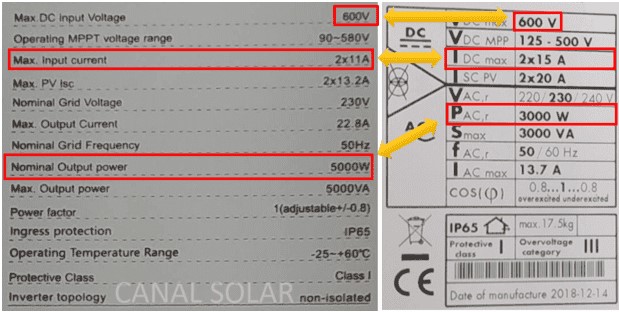
 DC disconnector switch
DC disconnector switch
The disconnector switch is a minor component in the inverter. Its only function is to section. Just that. How many times in the life of an inverter will someone activate the on/off switch, which connects the photovoltaic module circuit to the inverter? Almost never, you might think – and rightly so. What few people know is that this key, which is so little used, has to work very well when requested. Two characteristics are important in the disconnector switch: current carrying capacity during normal inverter operation and current isolating capacity. The first characteristic (conduction capacity) ensures that the switch has small ohmic losses and does not reach high temperatures during normal operation. The second (sectioning capacity) guarantees that the component will be able to interrupt the current without producing an electric arc, even with the inverter running, which could cause the component to melt and cause fire.
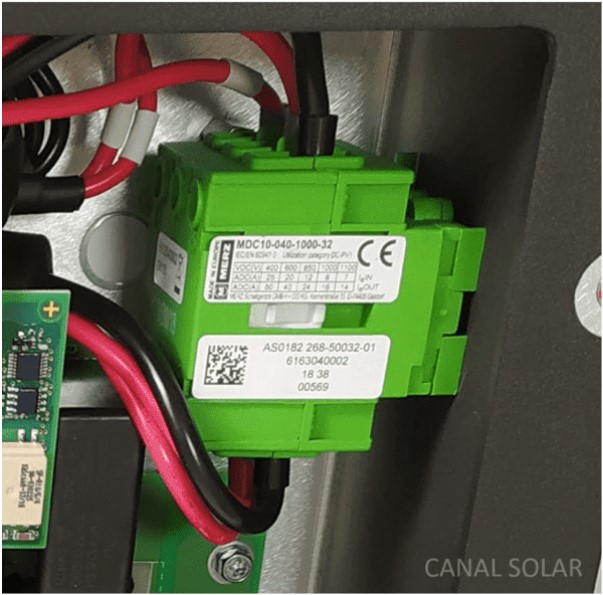
The disconnect switches used in most solar inverters employ rotary mechanisms. Disconnector switches are known to cause problems in direct current circuits, as their ability to interrupt electric arcs is very limited. There is also a little-known fact on the market, which is discreetly mentioned in some equipment manuals: the rotary switch requires intentional activation a few times a year in order to clean the contacts. Basically you have to go to the inverter a few times throughout the year, throughout the life of the equipment, to clean the switch contacts. By failing to do this you are violating the manufacturer's recommendations and reducing the lifespan of the component (and the inverter consequently). The issue of rotary switches will always be a problem in most equipment. The next time you read an inverter manual, look for some guidance on maintaining the disconnector switch. The inverter we take as a reference in this article employs a special type of non-rotary disconnector switch. This switch is manufactured by MERZ and is equipped with all SMA inverters. It is a detail that is little known and goes unnoticed by most consumers. You will only know this by looking inside the inverter. Non-rotary disconnect switches have a compression contact mechanism. In addition to ensuring good electrical contact during equipment operation, sectioning (opening the circuit under load) is very fast. By turning the button manually, the user releases a lock that instantly opens the contacts, safely extinguishing the electric arc. Furthermore, according to the manufacturer, non-rotary switches do not require preventive maintenance. It's not necessary to do anything. A solar inverter equipped with this type of switch can operate for many years without us needing to do any type of action on it. An important comment, complementing what I said above: it is recommended, however, to inspect all electrical installations periodically, including the electrical connections of the photovoltaic modules to the inverters. In this case I am referring to the installations and not the inverter itself.
Inner beauty
Lastly, the “pretty” aspect. It is a subjective and non-technical aspect. But there is something I always say: electrical installations and electronic boards must be beautiful and aesthetically pleasing. Beauty, which is not what really matters, reveals the concern with the project and the care in the assembly. Taking a closer look at the two devices we see differences in design that attract attention. The generic equipment (with all due respect) has a certain homemade assembly feel, while the SMA looks like a work of art, giving the impression that its design was careful (and went through many years of development and maturation) and its assembly is mostly mechanized, except for the fittings of power and communication boards and cables. I will be criticized by some readers for this subjective analysis regarding the inner beauty of inverters, but this difference is indeed noticeable. I invite the reader to someday open inverters from different brands and visually inspect every detail. Beauty is put on the table, yes, contrary to what the proverb says. Draw your own conclusions.
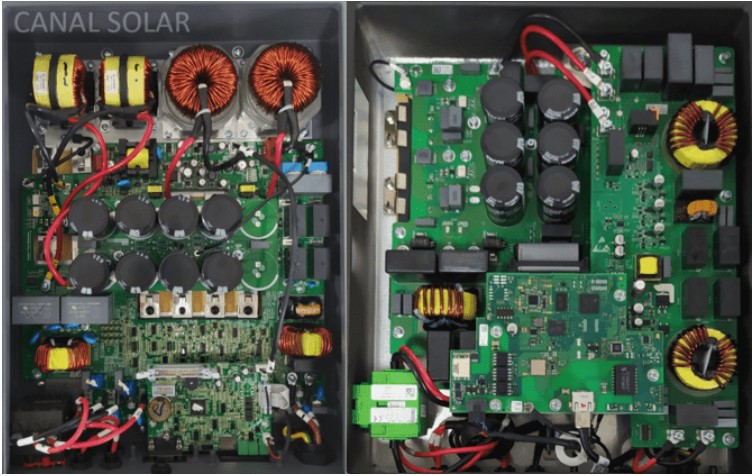
Conclusion
You're better off paying more for equipment that will last longer and won't disappoint you. This is a case where more expensive is better, without a doubt. You won't always be able to look inside a piece of equipment to know if it is better or worse than another. So, research the manufacturers, their reputation, their service structure, their warranty period and other things I mentioned at the beginning of the article. The best selection criterion is the time of equipment warranty, which is usually directly related to the confidence that the manufacturer has in its own equipment. Secondly, in my opinion, the manufacturer's availability to provide support and maintenance if your equipment fails is very important. Good luck in your choice. And when your inverter fails after 2 years of use, don't say I didn't warn you.




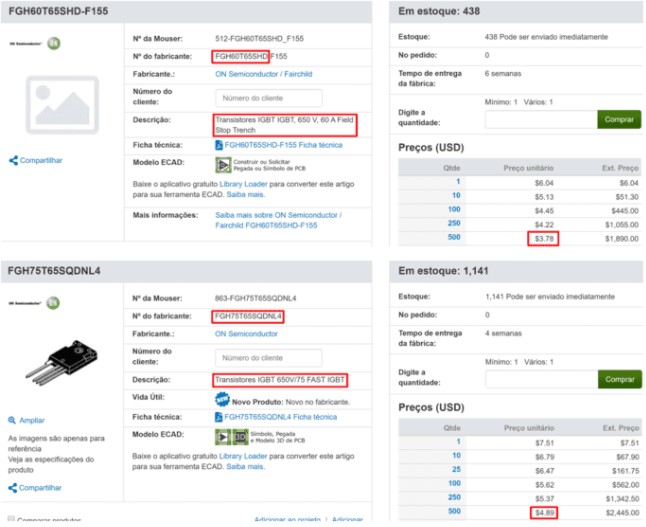

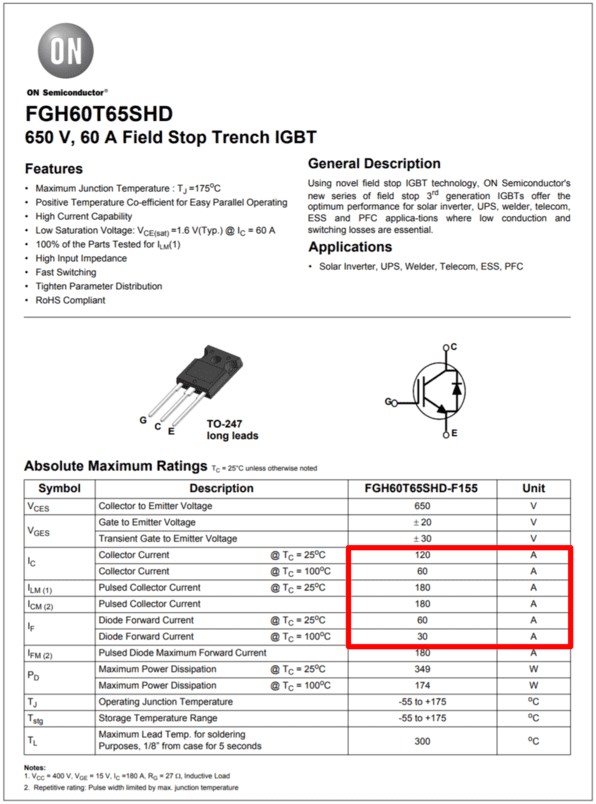
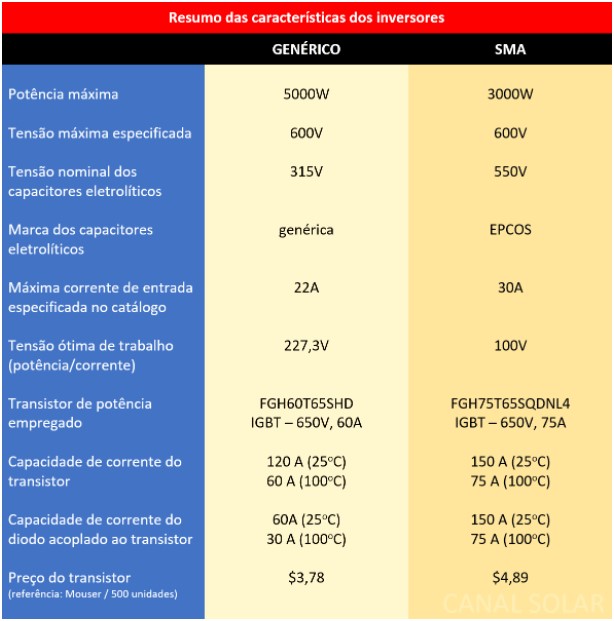 DC disconnector switch
DC disconnector switch











6 Responses
Congratulations Marcelo!
very transparent literature!
I worked with electronics from 1970 to 2000 and always admired well-designed projects.
(with quality reservation)
This is what the planet needs.
Could anyone tell me which inverter topology is most used for single-phase systems?
Great text! Congratulations on the technical analysis of the components. However, just because the inverter is an SMA doesn't mean it won't have problems (I've had 2 SMAs that were replaced due to manufacturing defects in less than 2 years of operation). Cheap things can actually be expensive, but higher priced ones don't escape either.
Excellent explanation of the most important technical and support items for decision making.
Excellent article. I would like to know about Growaatt inverters, because I purchased one and when reading this text, I realized that it highlighted the company's time on the market and Growatt is only 10 years old. Do you have anything to say about this Growatt inverter?
In addition to SMA, I also work with Growatt, and despite being on the market for 10 years, they already have technical assistance and a call center for the best service. I have had experience with assistance and the shipping is at their expense, and the deadline for repair or exchange of the device is 30 days (to date, they have never failed to comply). A differentiator that I liked about the brand is that it can change parameters remotely and this saves a lot of travel and time spent going to the customer, being able to resolve the issue via the computer in my office.